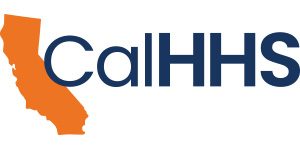San Francisco, CA. (Delivered November 15, 2018) – When I began my tenure at the California Health and Human Services Agency (CHHS) 10 years ago, we had two Undersecretaries and I made certain that IT was not in my portfolio. I found IT procurement to be soul crushing—it is outdated, frustrating and confusing. I also generally expected three things from large IT procurements: it will cost more than estimated, it will take longer than projected, and we will not be satisfied with the final product.
As we transitioned to one Undersecretary I become responsible for the IT portfolio, which required me to engage. I recognized that there were opportunities to improve the procurement process when we developed the California Healthcare Eligibility, Enrollment, and Retention System (CalHEERS), which is California’s enrollment system for Covered California and the eligibility system for Medi-Cal. In the case of CalHEERS, we were able to develop a functioning system within 18 months and not the traditional decade. This got me thinking about ways in which we can procure technology at a faster pace, while also being effective in meeting our needs.
Fast-forward to November of 2015 when the Government Operations Agency Secretary and I were approached by Code for America and Todd Park to discuss why the waterfall procurement approach we envisioned for the replacement of our Child Welfare System would be a failure. As a result of our conversations, we pivoted to an agile, modular approach to replace this critical system. Shifting to an agile approach allowed us to take risks, learn from any failures, and deliver a product that works for the end-users.
In addition to changing how we procured the Child Welfare System, we also changed our development model. Instead of developing a system in a vacuum and without the end-user, we decided that we would engage the end-user, the counties, from the beginning and throughout the development process. This already has resulted in a product that is user-friendly and meets the needs of our clients. It also helped us refocus our work on improving the delivery of our programs and services.
At the state level, especially with a state like California, where most of those benefits are delivered at the county, it is easy to forget why you are there. When I talk to groups of staff at CHHS, the first thing that I tell them is you do not have a job because of the Department of Health Care Services or the Department of Social Services. You have a job because somebody has a need. This is liberating for folks.
It is important to remember our purpose, which is to provide services to people who are in need. When you focus on that person or that family, everything shifts. You don’t design the systems as you might have designed them before. When you look at the eligibility systems and the enrollment systems that we have, when you look at how clients have to redeem their benefits and how they check their balances—all of those things have been designed in a way that meet the needs of government organizations, but they do not meet the needs of the person receiving the benefits or services.
So when you actually start to look at the user experience from the perspective of that family or the client you quickly realize that most processes are developed not with the client in mind. The processes are fragmented, difficult to navigate, and often confusing. We must fix this. Additionally, I often tell people that as a government agency we must break ourselves into silos to operate out of necessity. Functionally, to manage an organization of our size—12 Departments, $160 billion operating budget, and 30,000 employees—you have to operate in silos. However, the clients we serve don’t live their lives in silos. Their needs branch across multiple programs across multiple departments. It should not be their job to figure out how to best navigate the bureaucracy. We must help them bridge our silos so that we can make sure they receive their benefits at the right time and in the right place.
In theory, pivoting to a user-centered approach and an agile, modular procurement processes, is obvious and easy, however, in practice it is difficult. It has required significant change management, and it has made us think about the tradeoffs. For example, taking a specific approach may be quicker, but won’t necessarily deliver the results we want or meet the needs we have. We have learned that being fast to deliver is not always the right approach. From an IT perspective, finding a system that has all the functionality, or at least most of the functionality, may achieve the goal of delivering quickly, but likely won’t ensure that you use the end-user. In the case of the Child Welfare System, delivering a product that meets the needs of the end-users and is client-centered is more important than delivering a product quickly. We have been slow to delivery, and we must move quicker, but we also consider the tradeoffs.
This new approach of thinking has also given us the opportunity to honestly assess risk and failure. It is alright to fail, especially with a modular approach where you have modules which are $10-15 million. We certainly don’t want them to fail, but if they fail, it is not devastating. On the other hand, a $500 million project simply cannot fail. Too often we are not realistic about what success looks like and in the process we don’t fully assess the risk. We must change this and the modular approach allows us to assess risk in increments so that if a module fails, we have the ability to learn from that failure.
Everything that we have done over the course of the past few years falls under the common theme of refocusing our efforts on the end-user or the client. In tandem, these efforts are moving CHHS from a department, program centered Agency to a client-centered Agency.

